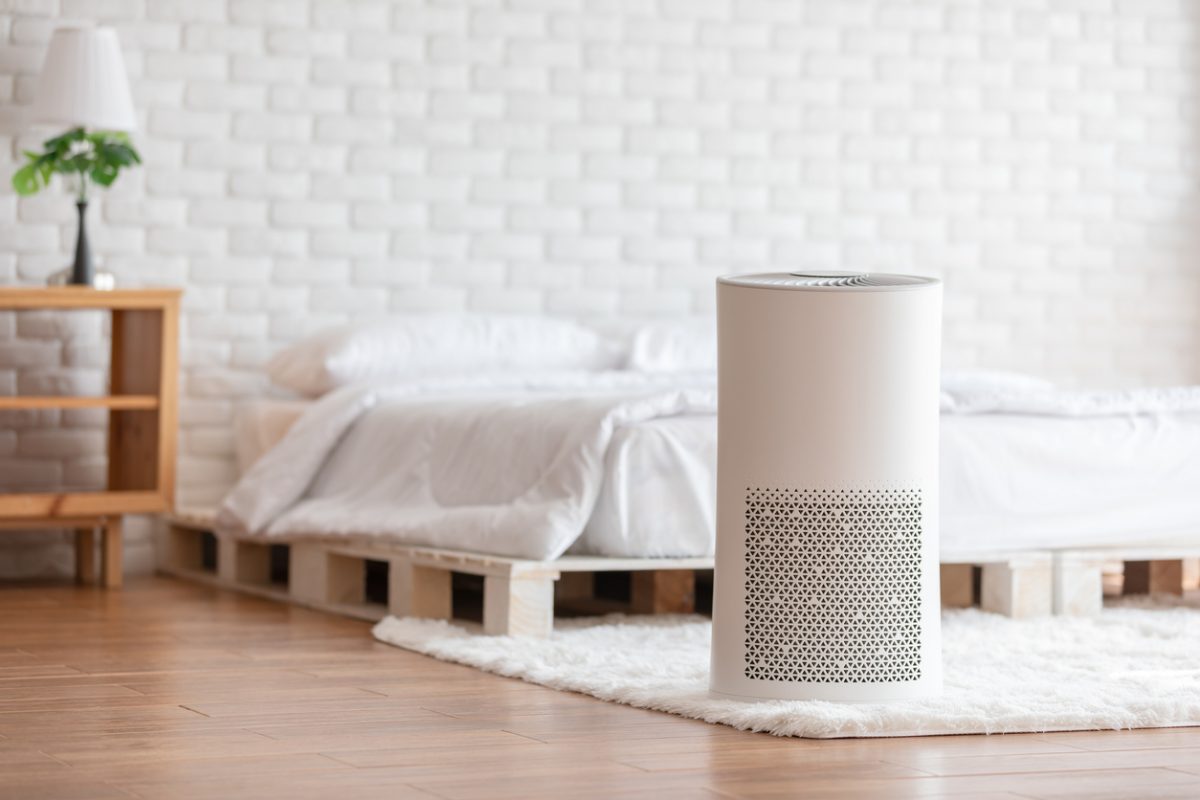
Homes have been busy places during the COVID-19 pandemic. With more time at home, people have done more around the house and made significant changes to their homes. They’ve upgraded appliances, cleaned more, and taken on projects like kitchen and home office renovations.
They have also paid more attention to improving their indoor air quality, according to the results of AHAM’s recent survey on appliance use during COVID. Room air cleaners, also called air purifiers, have long been the go-to appliance for allergy sufferers to reduce the amount of dust, pollen and other symptom triggers from the air. Consumers are still concerned about those common indoor air pollutants, but AHAM’s research found that many consumers are now looking to their air cleaners to reduce biologic pollutants as well. After the cleaning and sanitization vigilance, that came with the pandemic, it is understandable that people are thinking about viruses and germs in the air at home, especially since the EPA announced that a room air cleaner could be part of the plan in reducing the risk of catching COVID.
AHAM and air cleaner manufacturers have been working to learn more about an air cleaner’s role in reducing viruses and other microbiological pollutants. After 18 months of work by a committee of leading air cleaner manufacturers, public health professionals and academic researchers, AHAM in March 2022 finalized the first official industry air cleaner standard focusing on microbiological pollutants. The standard gives appliance manufacturers a consistent way to test the effectiveness of portable room air cleaners’ ability to remove viruses, bacteria and mold.
Of those who responded to AHAM’s survey. 42% reported using their air treatment appliances more than they did before the pandemic. Almost half — 46% — say they are taking steps to improve the quality of the air in their homes. Sixteen percent reported having purchased an air treatment appliance during the pandemic.
AHAM asked more than 700 consumers who were concerned about indoor air quality how worried they were about several common household pollutants. In order, based on how many consumers said they were “very” or “somewhat” concerned, they were:
- Dust
- Germs
- Viruses
- Mold
- Pollen
- Tobacco smoke
- Volatile organic compounds (VOCs)
- PM 2.5 (particulate matter)
What are VOCs and PM 2.5?
You have most likely heard of the first six pollutants on the list. If you don’t know what VOCs or PM 2.5 are, here’s a quick primer.
VOCs
The U.S. EPA defines VOCs, volatile organic compounds, as compounds with a high vapor pressure or low water solubility. They often come from common household items like paints, cleaning supplies, fuels and other products. AHAM, manufacturers, and other industry experts are collaborating to develop test methods to evaluate the removal of VOCs by portable air cleaners as no consensus standard currently exists.
PM 2.5
PM 2.5 – particulate matter 2.5 microns or smaller – can come from a number of sources, including vehicle emissions, indoor heating systems and various outdoor pollutants. A simpler way of thinking of PM 2.5, according to the U.S. EPA, is “fine inhalable particles.” To put the size of PM 2.5 in perspective, the diameter of the average human hair is 70 micrometers, or about 30 times larger than the smallest inhalable particle. Some PM 2.5 is known to cause allergy-like symptoms, and the particles are small enough to make it deep into the lungs and bloodstream, according to the U.S. Centers for Disease Control and Prevention.PM 2.5 is tracked as part of air quality reports, and the EPA monitors and reports national and regional PM 2.5 trends. AHAM has recently incorporated PM 2.5 particle measurement into an air cleaner’s Clean Air Delivery Rate testing.
Wildfire smoke is a significant source of PM 2.5, and people in areas affected by fires often rely on air cleaners to mitigate the effects of smoke on indoor air.
The Future of Air Cleaners
As consumers look to air cleaners as part of the plan to reduce exposure to illness-causing viruses and bacteria, AHAM is working with manufacturers, microbiologists, and test labs to develop a test procedure to gauge air cleaners’ ability to remove microbes (bacteria, viruses, and mold spores). This is likely to be a concern for consumers even after the COVID-19 pandemic subsides.
Find the Right Air Cleaner
From trying to reduce the spread of COVID to relieving seasonal allergy symptoms, everyone has their own reason for buying an air cleaner. No air cleaner removes every pollutant, and models perform differently in different spaces. Look for the AHAM Verifide® mark and the air cleaner’s Clean Air Delivery Rate (CADR) for a baseline you can use to compare models. CADR is the globally recognized measurement that shows how well an air cleaner will filter the air in a given room size. An air cleaner’s CADR shows measurements of the air cleaner’s ability to remove pollen, tobacco smoke, and dust. The ratings are established through rigorous testing conducted by an independent, third-party lab. The higher the number on the label, the faster the air cleaner removes the pollutants.
For many, the new focus on indoor air quality could continue. They include indoor air as part of cleaning, and 36% said they expect to keep up their focus on cleaning and tidying the house after the pandemic.


